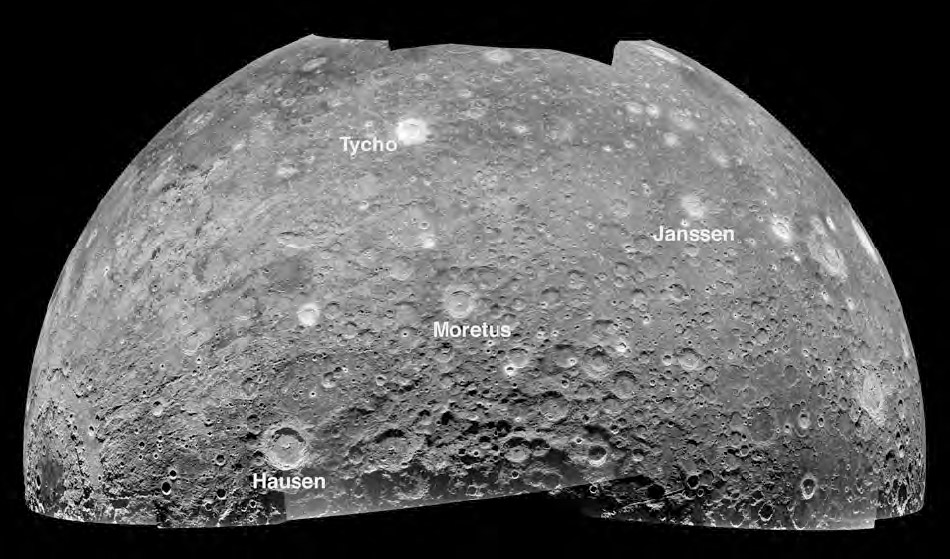
image from Tommy Thompson and colleagues
This mosaic of the southern highlands region of the Moon looks different from most images because it was made from 70 cm radar pulses beamed from the Arecibo radio telescope, with echoes received at the Green Bank one. The 70 cm (30″) pulses are strongly reflected by roughly similar sized boulders, but diffused and scattered by significantly smaller particles. Thus, the brightness of Tycho and a number of other craters is due to their relatively recent formation which excavated and scattered large rough blocks around them. With space weathering the blocks are broken down and become less effective radar reflectors. The bright craters are generally Copernican or Eratosthenian in age. The radar bright rims are equivalent to rays - both mark fresh craters. Tommy Thompson and his coauthors note that the bright craters are not evenly distributed - there are far more of them north of a line from Tycho to Janssen than to the south of that line. If there are fewer young craters to the south that seems to imply a younger age for the the southern terrain. But that can’t be true because the southern highlands are very heavily cratered. Thompson suggests that when young craters form on the maria they excavate solid basaltic rocks, creating lots of large coherent boulders - perfect radar reflectors. But when young craters form in the old highlands they excavate previously fractured and crushed material, creating few radar-bright blocks. The area north of the Tycho-Janssen line isn’t maria, so the difference in numbers of radar bright craters may map out areas with different near surface characteristics. For example, the area between Tycho and Moretus, from Orientale to Janssen has a lighter general hue than areas north and south - this may be a “mega-ray” of Orientale ejecta. Young craters here would have few coherent rocks to eject. A possible complication with this interpretation is Zucchius, the very bright crater west of Moretus which sits on Orientale deposits. I think we are in the early days of understanding exactly what causes the patterns, but the radar does imply that there are differences in the mega-regolith of the highlands, an exciting result in itself!
Technical Details
Orthogonal projection of depolarized radar data. Langrenus is the bright crater on the far right.
Related Links:
70-cm radar propoerties as a guide to mega-regolith differences across the Moon’s Southern Hemoisphere, by Thompson, Campbell, Ghent and Hawke (2007) LPSC abstract 1102.
COMMENTS?
Click on this icon File:PostIcon.jpg at the upper right to post a comment.



